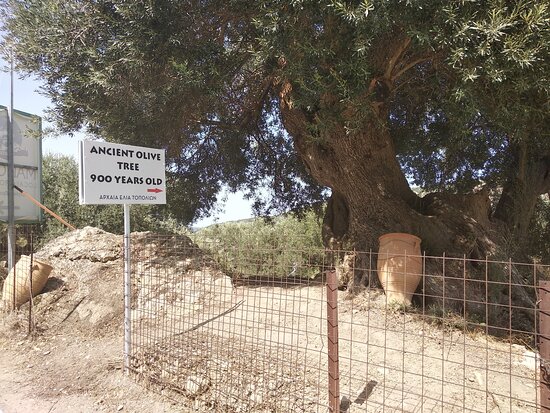Crete, the largest of the Greek islands, is synonymous with olive trees. These ancient trees, with their gnarled trunks and silvery leaves, are a defining feature of the Cretan landscape and a cornerstone of its culture and economy. The history of Cretan olive trees is a rich tapestry woven through millennia, reflecting the island’s agricultural practices, dietary habits, and cultural traditions. Understanding this history offers a profound insight into the significance of olives and olive oil in Cretan life, both past and present.
Ancient Origins and Early Cultivation
The olive tree, Olea europaea, is believed to have been cultivated in Crete as early as 3500 BCE, during the Minoan civilization. Archaeological evidence, including olive presses and storage jars, indicates that olives and olive oil were integral to Minoan society. Olive oil was not only a dietary staple but also used for religious rituals, lighting, and medicinal purposes.
The Minoans’ sophisticated agricultural practices included terracing hillsides to create arable land and developing irrigation systems to support olive cultivation. The importance of olive oil is also evident in Minoan art, which frequently depicts olive trees and the olive harvest. The prominence of the olive tree in Minoan culture set the stage for its continued significance in subsequent civilizations that inhabited Crete.
The Classical and Hellenistic Periods
During the Classical and Hellenistic periods, the cultivation and trade of olive oil expanded significantly. Olive oil was a major export product, contributing to Crete’s economic prosperity. The Greeks believed that the olive tree was a gift from the goddess Athena, symbolizing peace and prosperity. This mythological association further cemented the olive’s importance in Greek culture.
Inscriptions and ancient texts from this period reference the legal protection of olive trees, underscoring their value. Laws were enacted to regulate the planting and harvesting of olives, and penalties were imposed for damaging or destroying trees. This legal framework highlights the critical role that olive trees played in the agricultural and economic stability of Crete.
Roman and Byzantine Eras
The Roman conquest of Crete in 69 BCE brought about changes in agricultural practices and trade networks, but the cultivation of olive trees remained a constant. The Romans introduced new techniques for olive oil production, enhancing the quality and quantity of oil produced. Olive oil continued to be a vital commodity, used extensively in cooking, medicine, and as a base for perfumes and cosmetics.
During the Byzantine era, from the 4th to the 12th century CE, Crete’s olive oil production remained robust. Byzantine records and archaeological findings suggest that olive oil was a staple in both religious ceremonies and daily life. The Byzantine influence also saw the establishment of monastic estates that played a crucial role in preserving agricultural knowledge and practices, including olive cultivation.
Venetian and Ottoman Periods
The Venetian period, beginning in 1204, marked a time of significant agricultural development in Crete. The Venetians encouraged the cultivation of olive trees, recognizing the profitability of olive oil production. They introduced advanced agricultural techniques and expanded olive groves, many of which remain productive today.
Under Ottoman rule, starting in 1669, olive cultivation continued to flourish, although the focus shifted slightly towards self-sufficiency rather than large-scale trade. The Ottomans also appreciated the value of olive oil in cooking and medicine, ensuring the continued importance of olive trees in Cretan society.
Modern Era and Contemporary Practices
In the modern era, particularly after the Greek War of Independence in the early 19th century, olive cultivation in Crete experienced significant growth. Technological advancements in agriculture and the establishment of cooperatives helped boost olive oil production. Today, Crete is one of Greece’s leading olive oil producers, known for its high-quality extra virgin olive oil.
Contemporary practices in olive cultivation have seen a return to traditional, sustainable methods. Organic farming and eco-friendly techniques are increasingly popular, reflecting a growing awareness of environmental conservation. The revival of ancient practices, such as hand-harvesting and cold-pressing olives, ensures the preservation of both the quality of the oil and the health of the olive trees.
Cultural and Economic Significance
The cultural significance of olive trees in Crete extends beyond their economic value. Olive oil is a staple of the Cretan diet, central to the Mediterranean diet, which is renowned for its health benefits. Olives and olive oil feature prominently in Cretan cuisine, from simple dishes like dakos (barley rusks with tomatoes and olive oil) to elaborate feasts.
Olive trees also hold a symbolic place in Cretan culture, representing longevity, resilience, and peace. Many olive trees in Crete are centuries old, some even dating back over a thousand years, standing as living monuments to the island’s rich history.
Conclusion
The history of Cretan olive trees is a testament to the enduring relationship between the people of Crete and their land. From the ancient Minoans to modern-day farmers, olive trees have been a source of sustenance, economic stability, and cultural identity. Exploring this history provides a deeper appreciation for the humble olive tree and its profound impact on Cretan life. As Cretans continue to cultivate and celebrate their olive heritage, they ensure that this vital connection to the past remains vibrant and alive for future generations.


